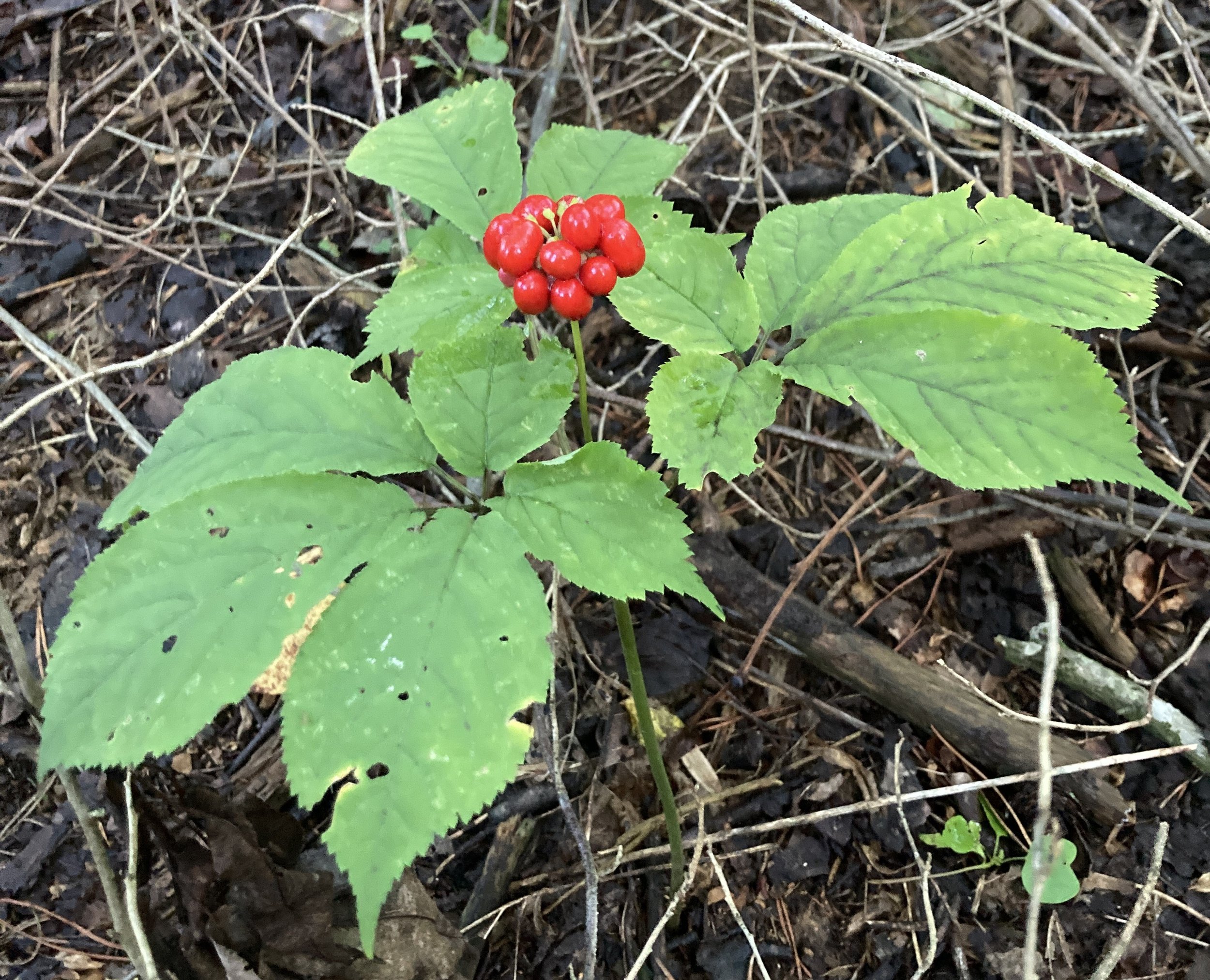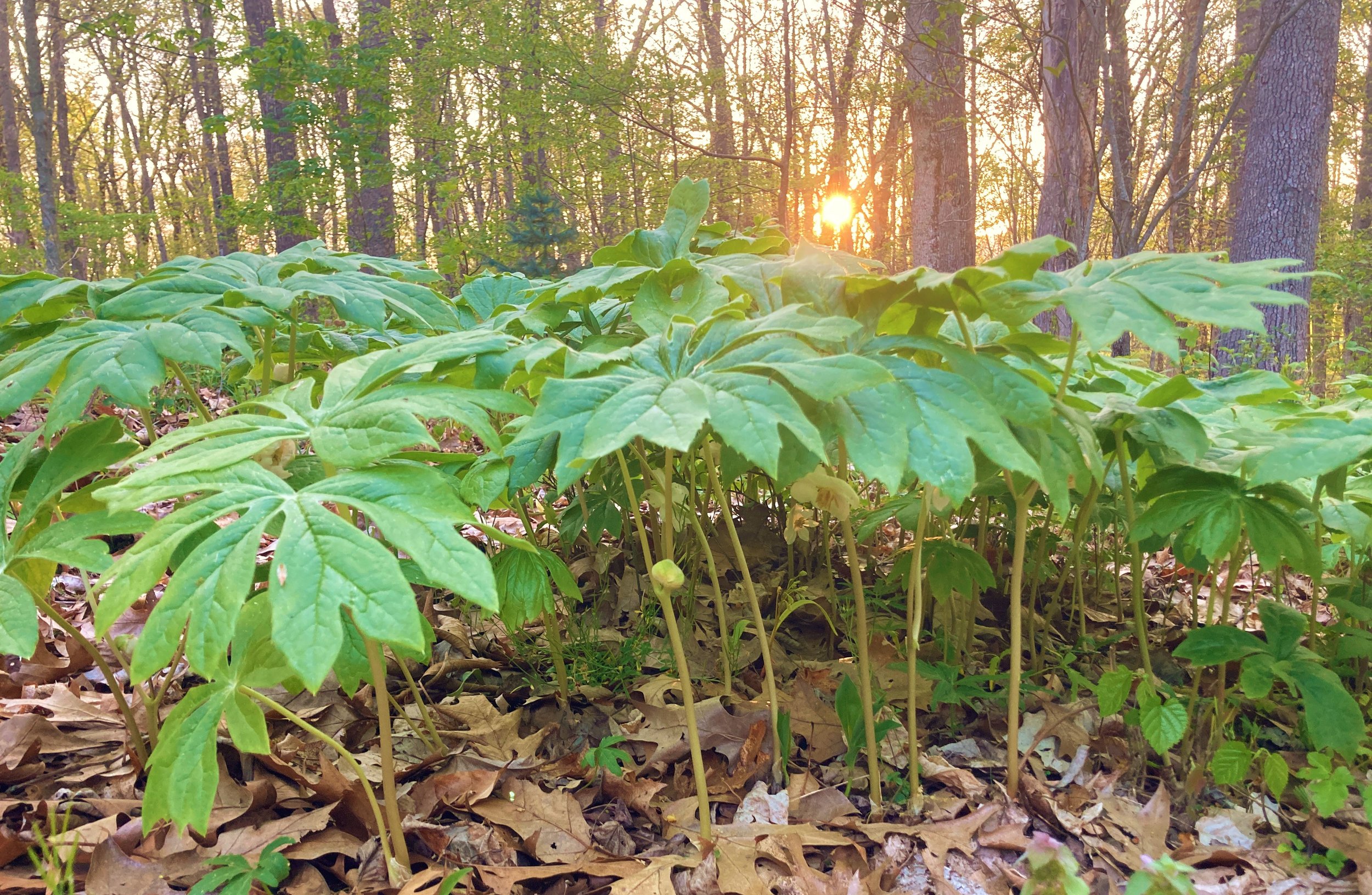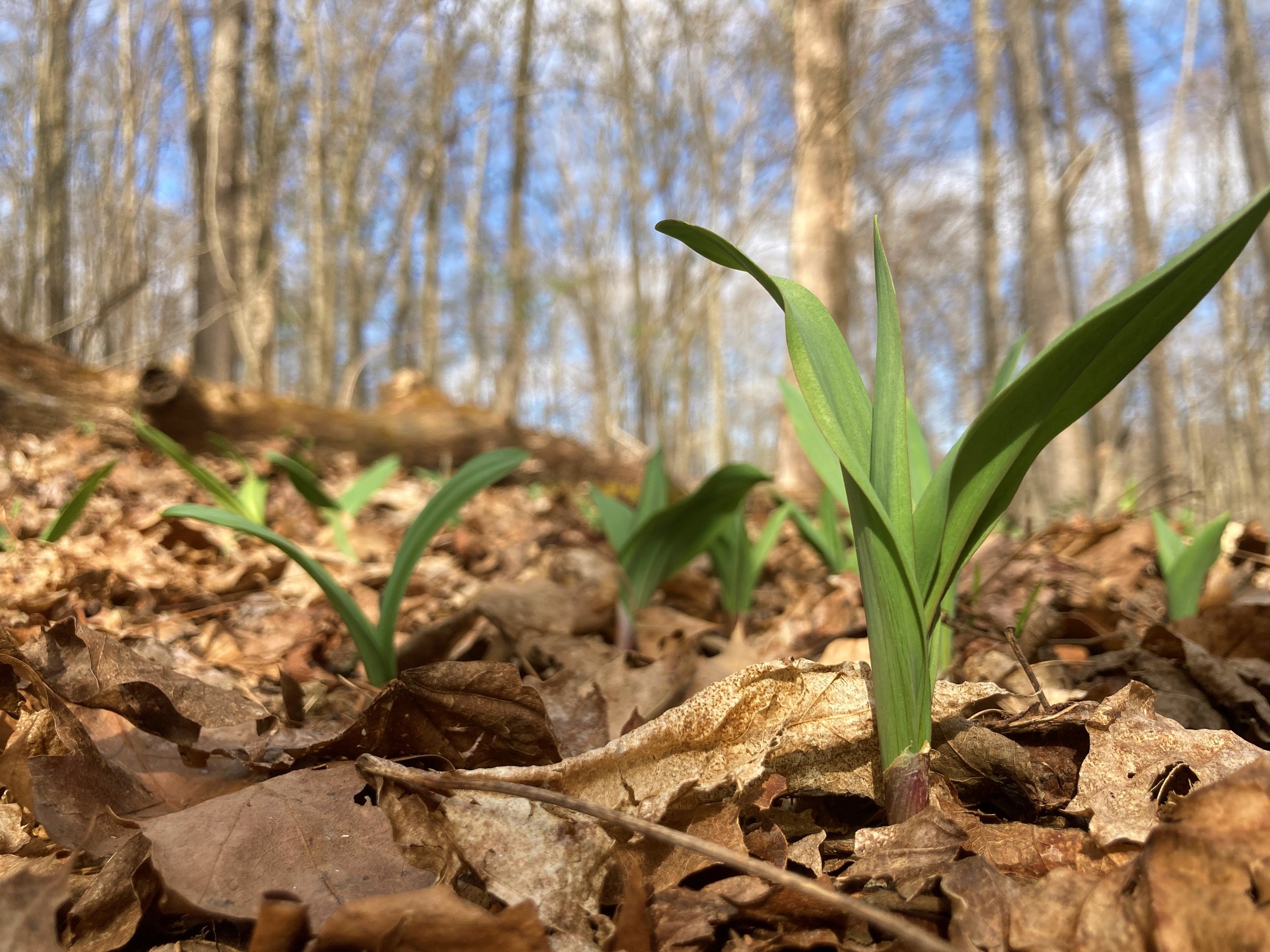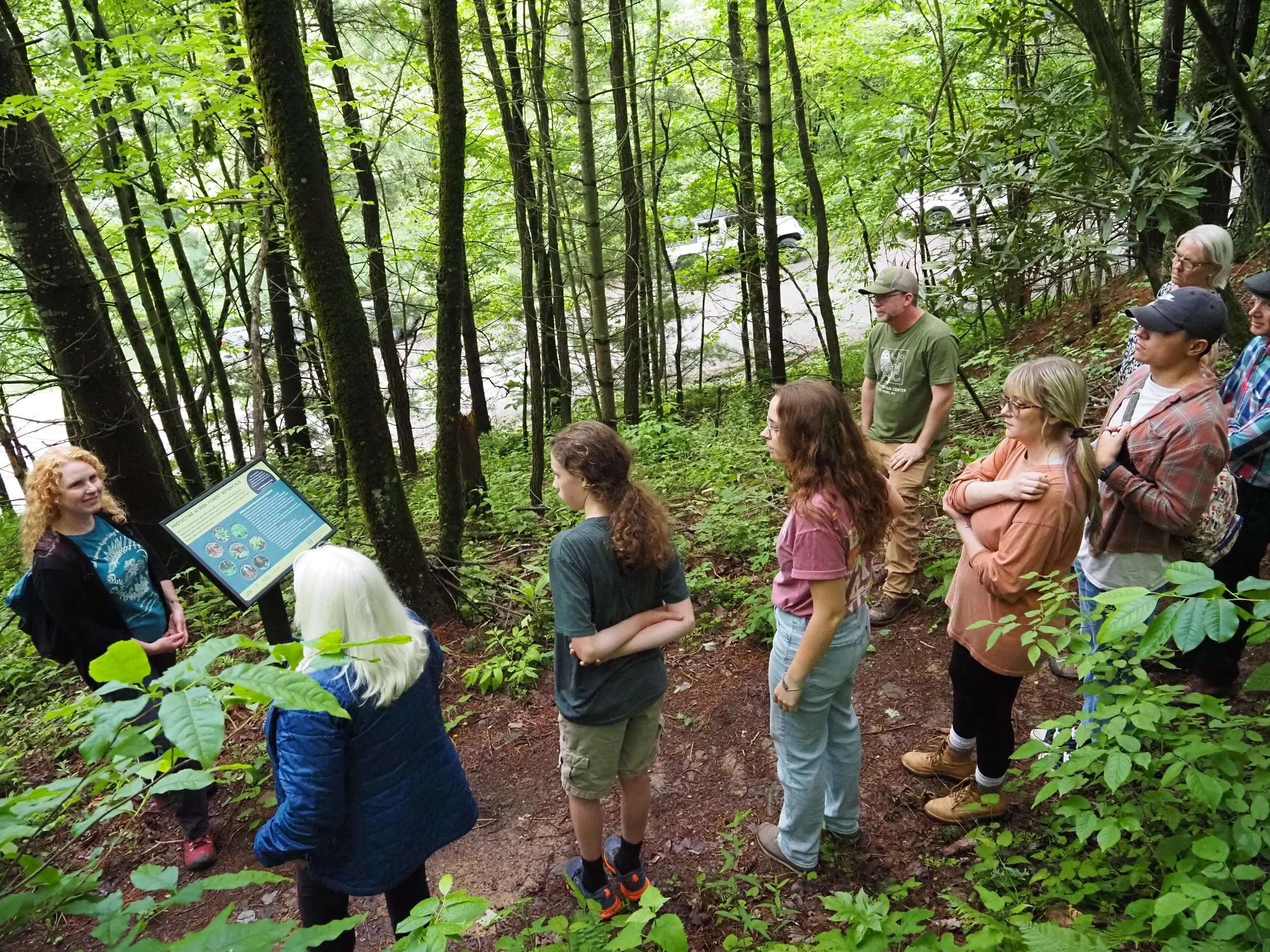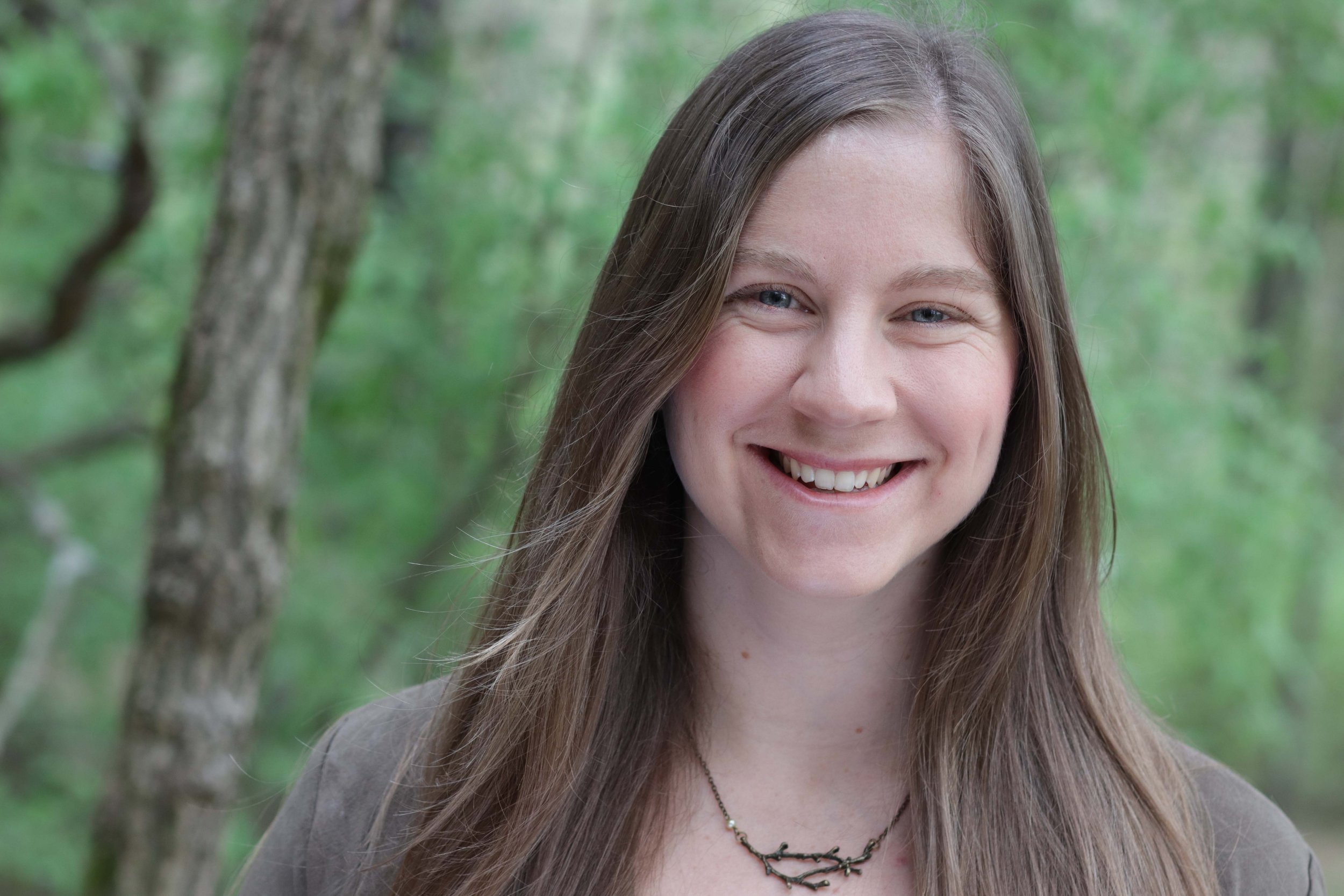Forest Botanicals Region Living Monument
Black and Blue Cohosh. Photo credit: Shannon Bell
The Forest Botanicals Region Living Monument seeks to challenge existing narratives about what is valued in Central Appalachia through highlighting the cultural, historical, ecological, and economic significance of the region’s abundant understory of native medicinal herbs and forest foods. Professors Shannon Bell and John Munsell from Virginia Tech will collaborate with Appalachian Sustainable Development, forest botanicals practitioners, members of the community, and the City of Norton, Virginia, to create this living monument and sanctuary at High Knob.
Appalachian forests are among the most biodiverse places on Earth. Well over 100 species of medicinal herbs and forest foods—such as black cohosh, mayapple, goldenseal, American ginseng, bloodroot, and ramps—grow wild in the Appalachian forest understory. Close to fifty percent of the medicinal herbs in the North American supply chain are native to Appalachian forests, and a large share of the herbal products found on the shelves of natural food stores and pharmacies throughout the world are harvested from the region. Long before there was a global trade in forest botanicals, Indigenous peoples tended stands of woodland herbs, using their Traditional Ecological Knowledge to establish food and medicine forests throughout the Appalachian Mountains. Herbalism has long been a cultural tradition in the Appalachian region, as have ginseng digging, ramp suppers, and a wide variety of festivals celebrating forest foods.
Through honoring Appalachian peoples’ historical and present-day connections to forest botanicals, this project aims to deepen place attachment and pride among local communities, providing the scaffolding needed to encourage conservation and to inspire sustainable economic futures for the region.
Photos credit: Shannon Bell
Components of the Monument
There will be four components of the Forest Botanicals Region Living Monument.
A “storywalk” composed of 10 interpretive signs that will be placed along the Sugar Maple and Twisted Forest trails at Flag Rock Recreation Area on High Knob. The signs will discuss the cultural, historical, medicinal, and economic importance that Appalachian forest herbs have held for a diversity of people, stretching from pre-colonization to today.
A sculpture at the new High Knob Destination Center celebrating forest botanical stewardship in Central Appalachia.
A large interpretive sign, placed at the site of the sculpture, to introduce the monument and invite visitors up the mountain to Flag Rock Recreation Area to explore the storywalk trail. The interpretive sign will discuss, in broad terms, the historical and present-day cultural, economic, and medicinal significance of native Appalachian forest botanicals. A replica of this sign will also be placed at the parking lot of the storywalk trail.
An online exhibit about the Forest Botanicals Region of Central Appalachia, linked via QR code on the interpretive signs. This online exhibit will feature photos, videos, and audio file excerpts from interviews conducted with a diverse group of forest farmers, herbalists, sustainable wild harvesters, ecologists, and scholars knowledgeable about the culture and history of Appalachian forest-based traditions.
Upcoming Events
In the News
Project Collaborators
Shannon Bell
Shannon Bell is a Professor of Sociology at Virginia Tech. She is an environmental sociologist and Appalachian studies scholar whose research and teaching focus on environmental and climate justice, the socio-ecological impacts of fossil fuel extraction on rural communities, and the Forest Botanicals Region of Central Appalachia. She is author of two award-winning books and more than two dozen journal articles and book chapters. Her scholarship has received awards from a number of national and international professional societies, including the Rural Sociological Society, the American Sociological Association, the Association for Humanist Sociology, and the Society for Human Ecology. Shannon has conducted extensive research in Central Appalachian communities, including her most recent projects, which include an ethnography of Appalachian wild harvesting traditions and economies and an examination of inequities in the Appalachian wild-harvested herbal supply chain. In her free time, Shannon can be found removing invasive plant species from her neighborhood forest and cultivating at-risk native understory herbs, including ramps, goldenseal, black cohosh, and American ginseng.
Katie Commender
Katie Commender, Agroforestry Director at Appalachian Sustainable Development (ASD), started her agroforestry career in 2012 as ASD’s Agroforestry AmeriCorps VISTA, where she trained hundreds of beginning forest farmers and developed a multifunctional riparian forest buffer program with U.S. Fish and Wildlife Service. In 2016, Katie received her Master’s in Forestry from Virginia Polytechnic Institute and State University, where she served as the graduate teaching assistant for the agroforestry class and researched preferences and intentions for riparian buffer adoption and retention. Today, Katie continues to teach the next generation of forest farmers as a founding member of the Appalachian Beginning Forest Farmer Coalition (ABFFC). In 2017, she founded the Appalachian Harvest Herb Hub to help medicinal herb farmers sustainably grow, process, and market herbs to premium domestic and international markets. When not whipping up foraged ramp biscuits and pawpaw ice cream, Katie is gardening, hiking, paddling, and skiing her way through the Appalachians.
John Munsell
John Munsell is Professor and Forest Management Extension Specialist in Virginia Tech’s Department of Forest Resources and Environmental Conservation. John received a PhD in Forest Resources Management from the State University of New York and studies the environmental, social, and economic benefits of agroforestry and sustainable forestry practices with communities from Appalachia to Cameroon. He was President of the Association for Temperate Agroforestry from 2015-2017, served as an Associate Editor for Agroforestry Systems for more than 10 years, and co-authored The Community Food Forest Handbook published by Chelsea Green. John is author of more than 60 refereed journal articles and 50 technical publications, and is lead author of the urban and community agroforestry systems chapter and co-author of the forest farming chapter in the textbook North American Agroforestry: An Integrated Science and Practice, 3rd ed. He has secured more than $8MM USD in extramural grants and led more than forty funded projects. In 2017, John chaired the 15th North American Agroforestry Conference in Blacksburg and represented North America during the concluding “road map” plenary session at the 4th World Congress on Agroforestry in Montpellier, France in 2018. In 2019, John received the Outreach and Education Award from the Association for Temperate Agroforestry for extraordinary accomplishments in the field of agroforestry engagement. John also leads annual national advanced silviculture training for federal agency foresters from across the country.
Robin Suggs
Before joining Appalachian Sustainable Development’s Agroforestry Program Robin was the sole proprietor of MoonBranch Botanicals, a grower and producer of native medicinal plant materials along with other non-timber forest products in the small community of Yellow Creek in far western North Carolina. His company supplied the natural products and medicines industry with high quality native raw bulk botanicals produced in their natural habitats.


